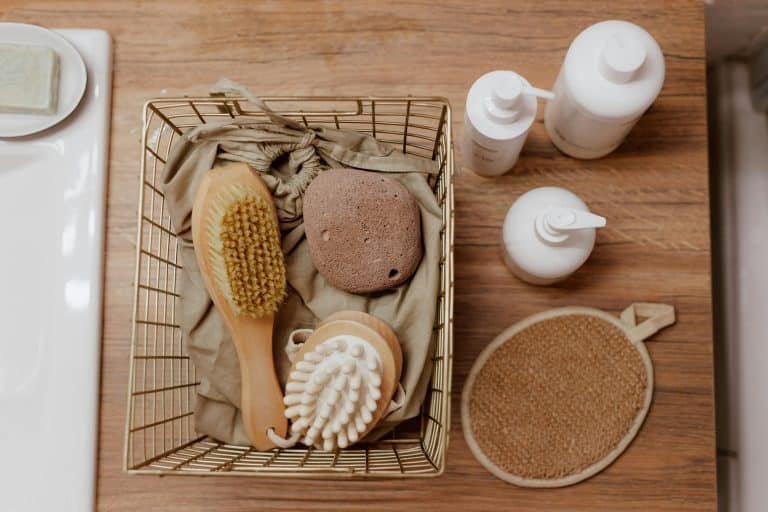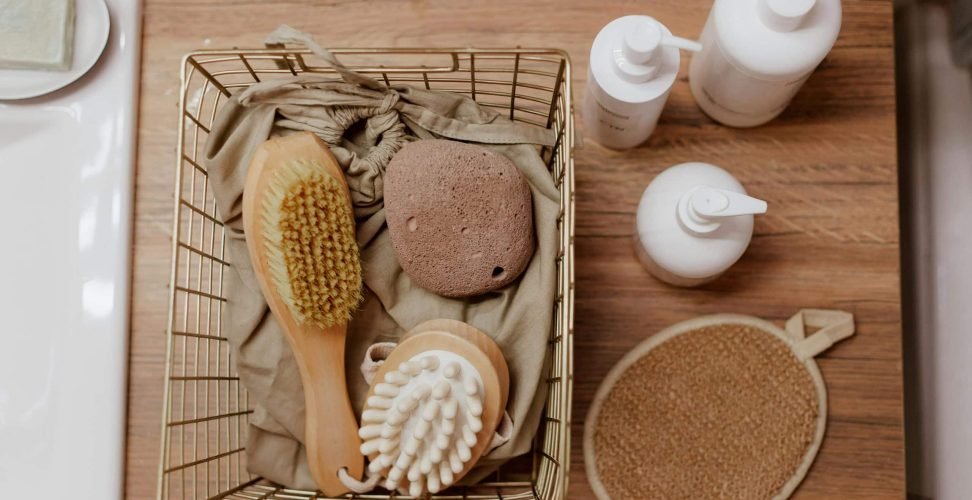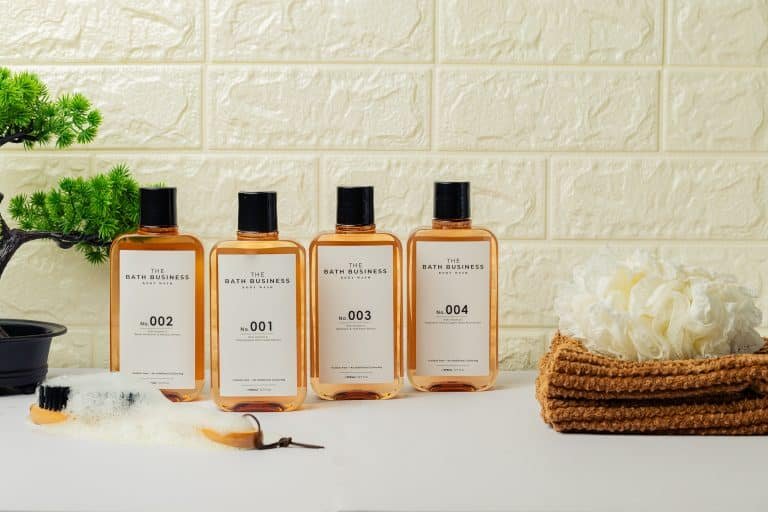Proper exfoliation will show glowing, healthy skin and prevent you from getting breakouts, but aggressive scrubbings will cause irritation, microtears, and long-term damage. Here’s how to make your exfoliator work for you, not against you.
When shopping for an exfoliating tool, examine the texture carefully. You should feel a slight roughness but nothing that feels scratchy or harsh against your inner arm (one of your most sensitive areas). Remember that materials like plastic mesh can be abrasive too, while natural plant fibres tend to soften with use.
Starting with the right foundation is crucial for effective and safe exfoliation. Always begin with thoroughly cleansed skin, using warm (not hot) water to soften your skin and open your pores. This preparation step allows the scrubber to work more effectively while reducing the risk of pushing dirt and bacteria deeper into your pores.
How you move your scrubber across your skin can make all the difference. Use gentle, circular motions, letting the scrubber’s texture do the work rather than applying pressure. Think of it as painting gentle circles rather than scrubbing a dirty pot—you’re working with delicate living tissue, after all.
Start from your feet and work your way up, always moving toward your heart to support healthy circulation. Keep your movements light and consistent, spending no more than 30 seconds on each area. Remember that redness isn’t a sign of effectiveness—it’s your skin telling you to ease up.
Exfoliation calls for frequency. For most people, using an exfoliating scrubber 2-3 times a week is plenty these days. If your skin is delicate or ageing, once a week may be your sweet spot. You are overdoing it if your skin is red, if you feel tight, or if you can see it’s irritated.
The time of day matters, too. Even a quick evening exfoliation will clean your skin off the day’s grime and dead skin cells. In the morning, it’ll help wake up your skin and get it ready for that day. When you don’t, try not to do that on sunny days; your skin can become a bit too sensitive to exfoliate.
Your skin’s thickness and sensitivity vary dramatically across your body, so your scrubbing technique should too. The skin on your face is much more delicate than your elbows or feet, so you might want to skip the scrubber entirely for facial exfoliation and opt for gentler methods specifically designed for facial use.
Focus more on rough areas like elbows, knees, and feet, where dead skin builds up. These areas can handle (and often benefit from) slightly more pressure. However, be extra gentle in places where the skin is naturally thinner, like your chest and neck.
Aftercare is just as important as the exfoliating itself. You immediately need to protect and hydrate your freshly exfoliated skin. To create a protective barrier and seal in moisture, apply your body lotion or oil when your skin is still slightly damp.
Additionally, you must prevent UV harm to your recently exposed skin cells. Apply a broad-spectrum sunscreen with an SPF no lower than 30, even if it’s cloudy when you go outside. Your fresh skin cells are more vulnerable to UV damage, so it’s even more important to exfoliate.
Also, remember that your exfoliating tool needs care, too. Rush scrub it in hot, soapy water after each use and squeeze until you no longer can. It’s best to dry it completely between uses, though it’s always a dark, moist place, like in a shower that bacteria love to call home.
How often do you change your scrubber? Natural loofahs need replacing every 3-4 weeks and synthetic materials can be replaced every 2-3 months. An immediate replacement is needed if you notice any mould, odours or discolouration. Healthy exfoliation requires a clean scrubber.
Exfoliating should help your skin naturally renew itself. Tune out how your skin reacts and change according to that. These guidelines should leave you armed to make the most of your exfoliating routine and protect your skin at the same time. Buttered gently with consistent care, you will bring out the glowing, smooth skin you desire without stressing or aggravating the skin.




